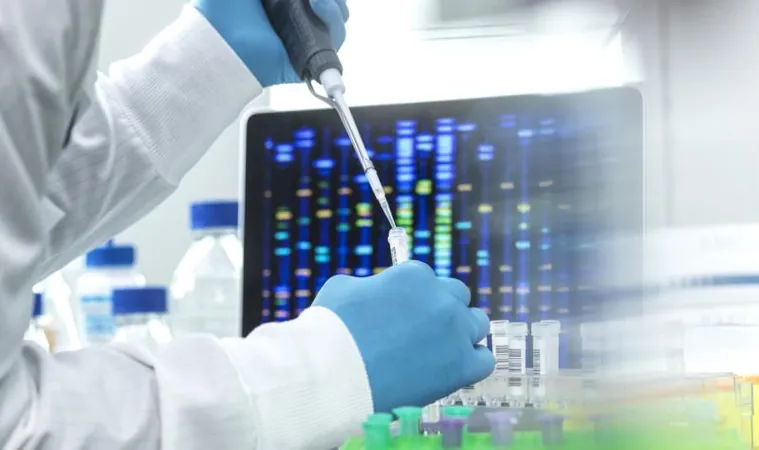
Revolutionary Genomic Test Could Transform Diagnosis of Infectious Diseases!
2024-11-20
Author: Daniel
Introduction
In a groundbreaking development that could reshape the landscape of infectious disease diagnosis, researchers at the University of California–San Francisco (UCSF) have unveiled a novel genomic test capable of identifying infections caused by a wide range of pathogens, including viruses, bacteria, fungi, and parasites.
About the mNGS Test
This innovative tool leverages metagenomic next-generation sequencing (mNGS), a cutting-edge genomic sequencing technique designed to decode the genetic material of pathogens in record time.
Advantages of mNGS Testing
Gone are the days of tedious and lengthy testing processes that involve ruling out one pathogen at a time. The mNGS test simultaneously analyzes the RNA and DNA in a sample, providing rapid and accurate results that can significantly accelerate the diagnosis and treatment of infections. Charles Chiu, MD, PhD, a professor of laboratory medicine and infectious diseases at UCSF, emphasized the simplicity yet effectiveness of their technology: “By replacing multiple tests with a single test, we can take the lengthy guesswork out of diagnosing and treating infections.”
Development and Application
The journey toward developing this test began in the early 2010s, stemming from efforts to identify the pathogens responsible for neurologic illnesses. With its first clinical application in 2014, the mNGS test has been steadily gaining traction at the UCSF Clinical Microbiology Laboratory, having analyzed nearly 5,000 cerebral spinal fluid samples to date. Remarkably, 14.4% of these samples have indicated the presence of infections.
Improvements in Sensitivity
What’s more, the sensitivity of this remarkable test has improved significantly—from 54% to an impressive 86% between 2016 and 2023. During this period, the number of samples tested skyrocketed from 116 in 2016 to over 1,000 in 2022.
Turnaround Times and Findings
When it comes to turnaround times for results, the median duration has been clocked at 8.2 days for UCSF patients and 11.4 days for non-UCSF patients. Breaking down the data, the study revealed that DNA viruses accounted for the highest frequency of detections at 45.5%, followed by RNA viruses (26.4%), bacteria (16.6%), fungi (8.5%), and parasites (2.9%).
Impact on CNS Infections
Notably, mNGS testing emerged as the most sensitive option for detecting pathogens in a cohort of patients suffering from severe and diagnostically challenging central nervous system (CNS) infections—offering crucial insights in 30.4% of cases where it was the first or sole test to confirm a diagnosis.
Conclusion
The authors of the study believe that mNGS testing is not just an alternative but an essential component of the diagnostic process for difficult CNS infections. As the medical community holds its breath in anticipation, this revolutionary test may soon become a standard tool in tackling some of the most challenging infectious diseases. Could this be the future of diagnostics? Only time will tell!



 Brasil (PT)
Brasil (PT)
 Canada (EN)
Canada (EN)
 Chile (ES)
Chile (ES)
 España (ES)
España (ES)
 France (FR)
France (FR)
 Hong Kong (EN)
Hong Kong (EN)
 Italia (IT)
Italia (IT)
 日本 (JA)
日本 (JA)
 Magyarország (HU)
Magyarország (HU)
 Norge (NO)
Norge (NO)
 Polska (PL)
Polska (PL)
 Schweiz (DE)
Schweiz (DE)
 Singapore (EN)
Singapore (EN)
 Sverige (SV)
Sverige (SV)
 Suomi (FI)
Suomi (FI)
 Türkiye (TR)
Türkiye (TR)